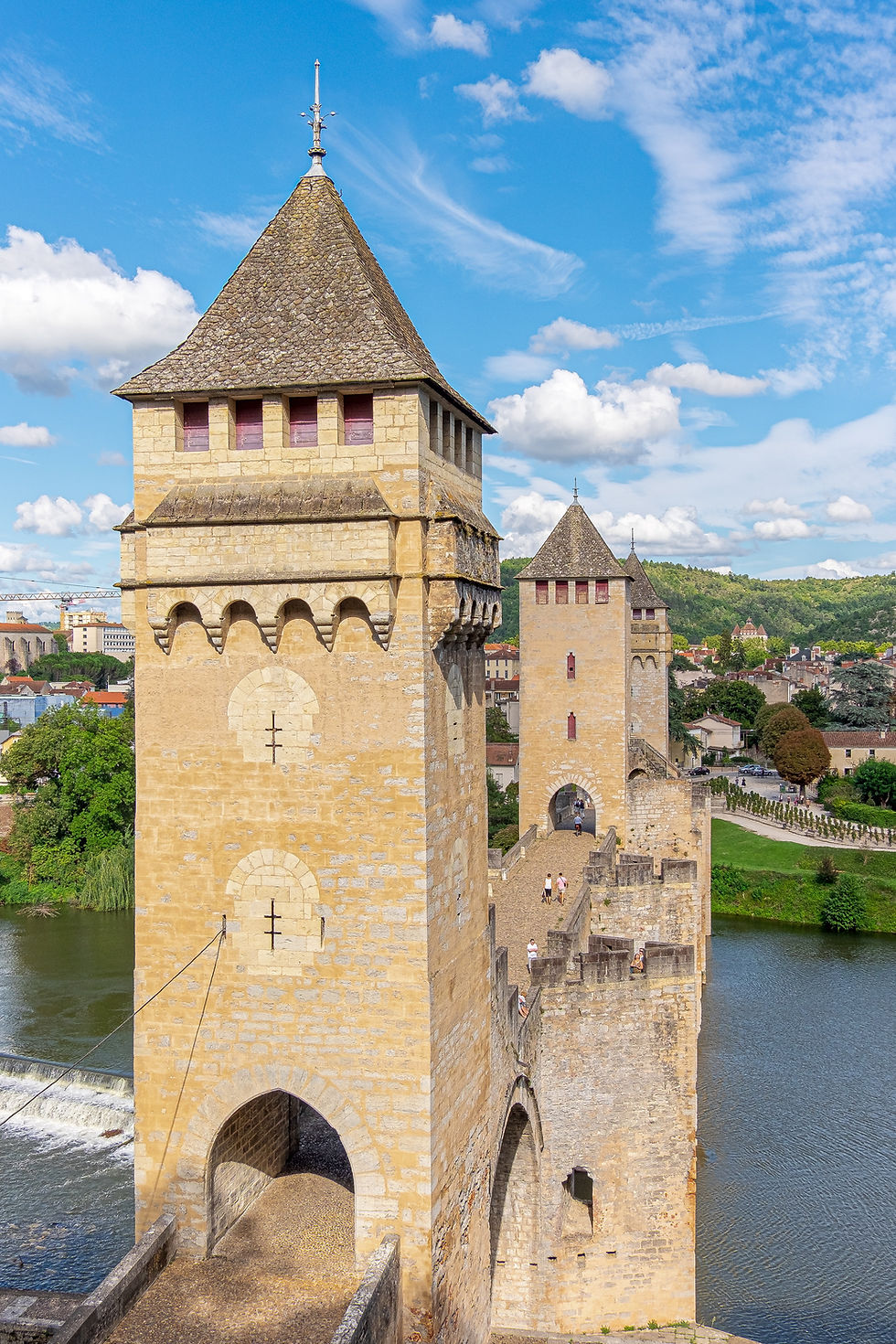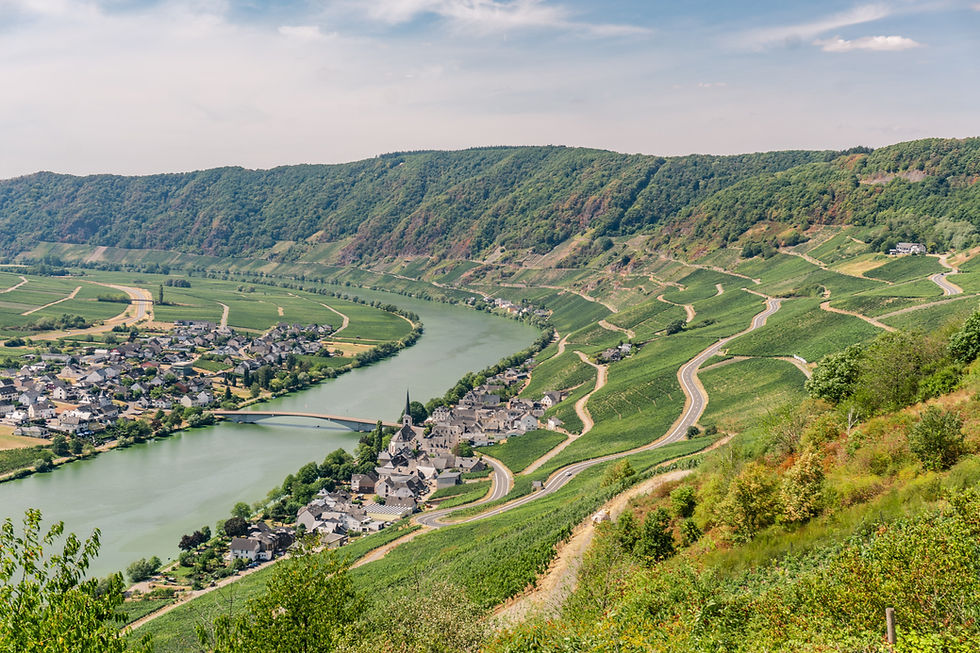Cahors: The French Malbec
- Keegan Neer

- Mar 3, 2022
- 4 min read
The Romans Called it, “The Black Wine of Cahors.” This tooth-staining, tannic, motor-oil is called Côt locally, internationally we call it Malbec. Its dark fruit flavors are commonly associated with Argentina, and the incredible world-class wines made there. However, it’s homeland was once Bordeaux, prior to the scourge of Phylloxera in the early eighteen-hundreds.

After Bordeaux began to recover, replanting of Cabernet and Merlot began, but the Malbec was never replaced to its former throne, though it is still allowed to be grown there according to AOP rules. The plantings of Malbec in Bordeaux are, however, fairly small today.
Per chance, to the south, in the plains of Cahors, a great few years of unexpected frost starting in 1956, destroyed the vines. Replanting consisted of mostly Malbec, and, of course, some Merlot for roundness. One other grape that has been planted here is Tannat, a tannic, heavy red blended with Malbec here. For a long while these grapes were used to thicken up some of the Bordeaux grapes with lackluster body.
Current AOP law dictates that up to thirty percent of the blend in Cahors is allowed to be made of Merlot, or Tannat or a combination of both. Interestingly, Cabernet Sauvignon, the King of Bordeaux, is not recognized here. Cahors has never really been given its due as a Malbec empire, but the style here is distinctly different than any other style of Malbec made around the world. The wines are praised for their typical French minerality, green flavors, reserved dry fruit, and cedar box smokiness.
The best thing about Cahors is its price-point. With prices rising on the rich, black fruit powerhouses from Argentina and California, it’s nice to see that Cahors retains its twenty dollar a bottle value in the face of climbing Malbec prices. The Reservas of Argentina have produced smashing vintages in the last decade, they’ve wowed critics and gained fans, but long neglected Cahors is beginning to make a comeback, bringing low-cost high-value offerings to show to the international market.

Though they were awarded an AOC in 1971, Cahors really began to come into their own in 2000, when a few renegade producers quit selling grapes to the Co-Op and began producing their own wines. One such producer, Mr. Georges Vigouroux, who'd made a name for himself long before, purchased Ch. Haute-Serre, a medieval winery that had fallen into disrepair after the scourge of Phylloxera, and returned it to its former glory. He also has other properties in Cahors, having planted over four-thousand hectares of grapes. He is essentially the Guigal of Cahors, with holdings spending all over Cahors, and further south.
Haute-Serre was one of the first oeno-tourist destinations with a Michelin-rated restaurant on the property and a fantastic view of the hills and vines. Prices today are higher than they were when Malbec began it’s revival, but incredibly, this fabulous wine costs less than the majority of Grand Crus in Bordeaux, at just twenty-five dollars per bottle.
They’re a fantastic value, and very easy to drink with dark fruit flavors of Blueberry, plum, and blackcurrant, undertones of leather, smoke and tobacco, this wine drinks incredibly and has fabulously rounded tannin for a Malbec at this price point.
Cahors is split into a few distinct regions, colloquially referred to as the valley, côteaux, and plateau. The valley is near the river Lot that runs through Cahors. Rivers have temperature regulating effects on wine keeping temperatures consistent and allowing grapes to ripen evenly. Coupled with cooling clay, and schist soils, these wines are allowed to prolong their ripening, resulting in rich, fruit-forward intense wines.
The fruit on the côteaux is further away from the river’s temperature-regulating effect, they are also planted on higher elevation. This means that these wines are further exposed to the elements than those on the plain, and the winds. The limestone soils here help hold temperature a bit and are warming to help with ripening, and reflect the sun. This results in large, bold wines, with a lot of tannin.
Lastly on the plateau, we see wines made in schist soils, away from the river, and at high elevation, but with more mineral deposits. These grapes are often grown amongst herbs to keep the vines warm, and generally one can expect a more tannic, but delicate wine with floral aromas and herbal palette development with some delightful green flavors.
You can also check out Clos La Coutale headed by Philippe Bernède who produces incredible drinking wines that are versatile and stand up to even some of the better Bordeaux. It’s young, juicy and loaded with blackberry jam essence, cinnamon, oregano, and mineral flavor. As the name suggests, this is a true Clos, a walled-in vineyard, medieval practice to parcel off growing areas. These are small-batch, heavily awaited offerings. Bernède has quite a fanbase in the wine world that eagerly awaits the latest vintage release.
The blend is eighty percent Malbec and twenty percent Merlot. It has the roundness of Merlot, but the black fruit and brashness of Malbec. The wine has such strength, brought out by its limestone soils, with excellent minerality. It’s drinkable with nice acidity. These wines come from the higher terroir and reflect Malbec’s seer power and floral character. Truly a lovely wine.
That’s all,
K
.png)





Comments